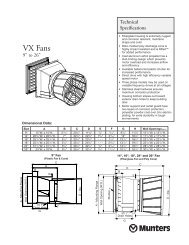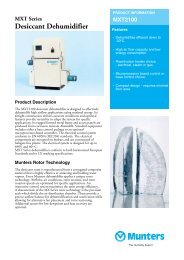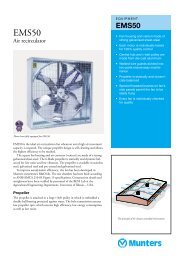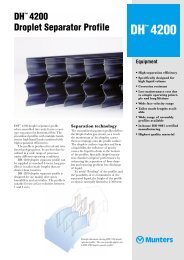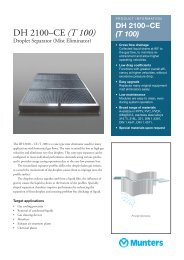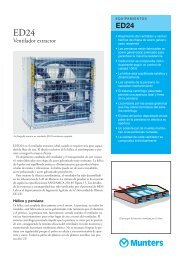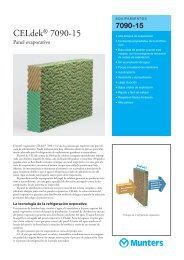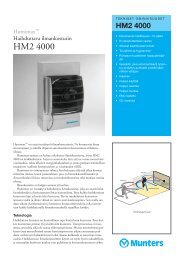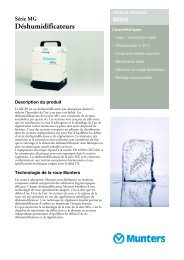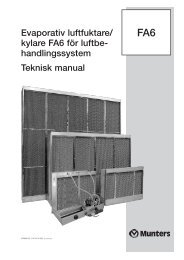NotesAmounts shown in million Swedish kronor (SEK M) unless otherwise indicated.Amounts in parentheses indicate values for the preceding year.CONTENT NOTESNotePage1 48 Company information2 48 Accounting principles3 52 Business Combinations4 52 Segment reporting5 53 Other operating income and operating expenses6 53 Depreciation and impairments7 54 Leasing8 54 Financial income and expenses9 54 Income taxes10 55 Earnings per share11 55 Tangible assets12 56 Patents, licenses, brands and similar rights13 56 Goodwill14 56 Participation in subsidiaries15 57 Participation in associated companies16 57 Prepaid expenses and accrued income17 57 Financial instruments18 57 Equity19 59 Interest-bearing liabilities20 59 Provisions for pensions and similar commitments21 61 Other provisions22 61 Accrued expenses and deferred income23 61 Pledged assets and contingent liabilities24 61 Transactions with related parties25 61 Average number of employees, absence due to illnessand gender distribution26 62 Wages, salaries and other remuneration and socialsecurity expenses27 63 Remuneration to Board members and senior executives28 63 Outstanding incentive programs29 64 Fees to auditorsNOTE 1 COMPANY INFORMATION<strong>Munters</strong> AB (publ) is a Swedish public limited company registered with theSwedish Companies Registration Office. Its Corporate Registration Number is556041-0606. The registered office of the Board Directors of <strong>Munters</strong> is inSollentuna Municipality in Sweden.The principal operations of the Group are described in Note 4. TheCompany’s shares are listed on the OMX – Nordic Mid Cap list.The consolidated accounts for the fiscal year ended 31 December <strong>2006</strong>were approved by the Board and the President on 7 March 2007 and will bepresented to the <strong>Annual</strong> General Meeting on 24 April 2007 for adoption.NOTE 2 ACCOUNTING PRINCIPLES2.1 Regulations appliedThe consolidated accounts have been prepared in accordance with theInternational Financial <strong>Report</strong>ing Standards (IFRS). Since the Parent Company isan EU company, the IFRS, approved by the EU, is the only regulations applied.Moreover, the consolidated accounts have been prepared in accordancewith Swedish law through the application of the Swedish Financial AccountingStandards Council’s RR 30:05 recommendation (supplementary accountingrules for groups).The Parent Company’s annual report has been prepared in accordance withSwedish law and through application of the Swedish Financial AccountingStandards Council’s RR 32:05 recommendation (Accounting for legal entities).This implies that the IFRS valuation and disclosure rules are applied, with theexception of the deviations indicated in the section entitled “Parent Company’saccounting principles.”2.2 Basis on which the accounts have been preparedThe consolidated accounts are based on historical acquisition values, with theexception of derivatives, financial assets available for sale and financial assetsvalued at their fair value via the income statement.2.3 Basis on which the consolidated accounts have been preparedThe consolidated accounts encompass the Parent Company and its subsidiaries.The financial statements for the Parent Company and its subsidiaries thatare included in the consolidated accounts refer to the same period and havebeen prepared in accordance with the accounting principles that apply to theGroup.All intra-Group transactions, revenues, costs, profits or losses that arise intransactions between companies included in the consolidated accounts havebeen entirely eliminated.SubsidiariesSubsidiaries refers to a company in which the Parent Company directly orindirectly holds more than half of the voting rights or otherwise has a controllinginfluence.A subsidiary is included in the consolidated accounts as of the time of itsacquisition, which is the day when the Parent Company acquires a controllinginfluence, and is included in the consolidated accounts until the day on whichthe controlling influence ceases.All acquisitions are included in the consolidated accounts in accordancewith the purchase method. This implies that the acquisition value is distributedamong acquired assets, commitments and liabilities assumed at the time ofacquisition on the basis of the fair values of these commitments and liabilities.Minority interestThe minority interest is the portion of earnings and of net assets of not whollyowned subsidiaries that accrues to other owners. The minority share in thecompany’s net earnings is included in the earnings reported in the consolidatedaccounts and the share in its net assets is included in the equity reported on theconsolidated balance sheet.Associated companiesAssociated companies refers to companies in which the Parent Companydirectly or indirectly has a long-term holding corresponding to not less than 20percent and not more than 50 percent of the voting rights or otherwise holds acontrolling influence.Associated companies are reported in accordance with the equity method.This means that the consolidated balance sheet includes the acquisitioncost of the shares, plus the Group’s share in the earnings of associatedcompanies after acquisition and after deduction of dividends received. Theconsolidated income statement includes the participation in the earnings of theassociated companies after tax, with deduction, where applicable, ofimpairments of goodwill and amortization of surplus values.Translation of the accounts of foreign subsidiariesThe subsidiaries’ items on the balance sheet are valued in the relevant functionalcurrency, which would normally be identical to the local currency in the particularcountry. The consolidated financial statements are presented in Swedish kronor,which is the Parent Company’s functional currency. The income statement andbalance sheets for the foreign subsidiaries are translated into Swedish kronor inaccordance with the current method. This method implies that the balancesheets are translated at year-end rates. The income statements are translated atthe average exchange-rate during the period. Exchange-rate translationdifferences do not affect earnings, but are reported directly under equity. Thefollowing currency rates have been used in currency translations.48 M U N T E R S A N N U A L R E P O R T 2 0 0 6
Average rateYear-end rateCurrency Country <strong>2006</strong> 2005 <strong>2006</strong> 2005AUD Australia 5.55 5.70 5.44 5.83CAD Canada 6.51 6.18 3.22 6.84CNY China 0.92 0.91 0.88 0.98DKK Denmark 1.24 1.25 1.21 1.26EUR Euro 9.25 9.28 9.05 9.43GBP United Kingdom 13.58 13.58 13.49 13.73JPY Japan 0.063 0.068 0.058 0.068NOK Norway 1.15 1.16 1.09 1.18SGD Singapore 4.64 4.49 4.49 4.79THB Thailand 0.19 0.19 0.19 0.19USD USA 7.38 7.48 6.87 7.95ZAR South Africa 1.10 1.17 0.99 1.262.4 Changed accounting principlesEffective 1 January <strong>2006</strong>, <strong>Munters</strong> changed its reporting of actuarial gains andlosses in accordance with the changes in IAS 19, Employee Benefits. Previousmethods implied that actuarial gains and losses, to the extent they fall outsidethe 10-percent corridor, are amortized over the average remaining employmentperiod for participants of the pension plan. As of 1 January <strong>2006</strong>, thealternative permitted by IAS 19 is applied, whereby all actuarial gains andlosses pertaining to benefits after termination of employment are reportedagainst equity, net after deferred tax, in the period that they occurred.Previous reporting periods have been recalculated in accordance with thenew principles. Special employer’s contributions in Sweden relating toactuarial gains/losses are reported under equity.The transition to the new principles resulted in pension provisions increasingnet by SEK 13 M as per 1 January 2005. Accrued expenses increased by SEK4 M and deferred tax assets increased by SEK 5 M. The impact on reportedequity on 1 January 2005 amounted to a negative SEK 12 M.2.4.1 Introduction of new accounting principlesAddendum to IAS 1This addendum requires that the Company submit additional information, whichwill make it possible for users of its financial reports to assess the company’sgoals, principles and methods for the management of assets. The addendumshall apply for fiscal years beginning 1 January 2007 or later.IFRS 7 Financial instrument – informationThis standard requires that the company submit additional information, whichwill make it possible for users to evaluate the company’s financial instrumentsand associated risks. IFRS 7 shall apply for fiscal years beginning 1 January2007 or later.IFRS 8 Operating SegmentThis standard also implies increased disclosure requirement pertaining toaccounting of operating segments, which can consist of products and servicesor geographical areas or a combination of both. The operating segments maybe presented in accordance with the principles that management applies foroperating control. IFRS 8 shall apply for fiscal years beginning 1 January 2009or later.IFRIC 10 Interim Financial <strong>Report</strong>ing and ImpairmentThe statement implies that a company cannot reverse an impairment that wasreported in a previous interim report pertaining to goodwill, investment in equityinstruments or financial assets reported at acquisition value. IFRIC 10 shall applyto fiscal years beginning 1 November <strong>2006</strong> or later.The new standards and interpretations described above mainly affectinformation in the financial reports. A documentation of the specific effects for<strong>Munters</strong> has been initiated.2.5 Use of assessmentsIn order to prepare accounts in accordance with GAAP, company managementand the Board must make assessments and assumptions that affect thefinancial statements and the information presented. These assessments arebased on past experience and on the various assumptions that managementand the Board consider reasonable under the prevailing circumstances.Conclusions drawn form the basis of determinations concerning reported valuesof assets and liabilities, in cases where they cannot readily be determined frominformation from other sources. The actual outcome can differ from theseassessments, if other assumptions are made or other conditions apply.Assessments can have a significant effect on the Company’s earnings andfinancial position, particularly in the areas of income recognition and doubtfulreceivables, goodwill valuation, other intangible and other fixed assets, leasing,restructuring measures, provisions for pensions and legal disputes, andcontingent liabilities.2.6 Accounting principles appliedBusiness combinationsIFRS 3 (Business combinations) is applied to acquisitions of operations carriedout on or after 1 January 2004, which complies with IFRS 1 and is consequentlyan exception from the main rule on retroactive application of IFRS.IFRS 3 implies that the fair value of the identifiable assets and liabilities of theacquired operations is established at the time of acquisition. These fair valuesalso include participation in the assets and liabilities attributable to any remainingminority owners of the acquired operations. Identifiable assets and liabilities alsoinclude assets, liabilities and provisions, including commitments and claims fromexternal parties that are not reported on the balance sheet of the acquiredoperations. Provisions are not made for expenses concerning projectedrestructuring measures resulting from the acquisition. The difference betweenthe acquisition value of the acquisition and the acquired share in the fair value ofthe net assets of the acquired operations is classified as goodwill and reportedon the balance sheet.The useful life of each intangible asset is established and impaired over theperiod of useful life. If the period of useful life is deemed indefinite, no impairmenttakes place. An assessment that causes the useful life of an intangibleasset to become indefinite takes all relevant circumstances into account and isbased on the premise that there is no predictable maximum time limit for the netcash flow generated by the asset. The useful life of goodwill is generallyassumed to be indefinite.Fixed assetsFixed assets are reported on the balance sheet at acquisition value withdeduction of accumulated depreciation according to plan and any applicableimpairments. The assets of acquired companies are reported at fair value on thedate of acquisition with deduction of accumulated depreciation.The acquisition value of the asset is depreciated straightline throughout theexpected useful life of the asset. Anticipated periods of useful life are specified inNote 6. The assets’ remaining useful life is reviewed on every closing date and isadjusted if necessary.Buildings, machinery and equipmentLand is not subject to depreciation since it is considered to have an indefiniteuseful life.Normal maintenance and repair costs are expensed as they arise. Moreextensive renovation and upgrade costs are reported as an asset anddepreciated over the remaining useful life of the object.GoodwillGoodwill is the value by which the acquisition price exceeds the fair value of thenet assets acquired in conjunction with the acquisition of a company or anacquisition of assets and liabilities. Goodwill arising from the acquisition ofassociated companies is included in the reported value of the associatedcompany.Patents, licenses and similar intangible rightsDirect external expenses for the development of software for internal administrativeuse are capitalized, provided future efficiency gains are likely and exceed theexpenses committed. Activities during the preliminary study phase, andmaintenance and training costs, are expensed on a regular basis.DepreciationThe value of the fixed assets is regularly impairment-tested. Goodwill and otherintangible assets with an indefinite useful life are impairment tested at least oncea year. When there is an indication that an asset’s value has declined, thereported value of the asset, including goodwill, is assessed.If an asset’s reported value exceeds its estimated recovery value, the assetis impaired to its recovery value. The recovery value is the higher of net salevalue and value in use. Recovery value is assessed for each cash-generatingunit individually.“Net sale value” refers to the most likely sale price in a normally functioningmarket, with deduction of selling costs. ”Value in use” refers to the present valueof the estimated future cash flows that are expected to result from the use ofthe asset and the estimated residual value at the end of the asset’s useful life.M U N T E R S A N N U A L R E P O R T 2 0 0 6 49





